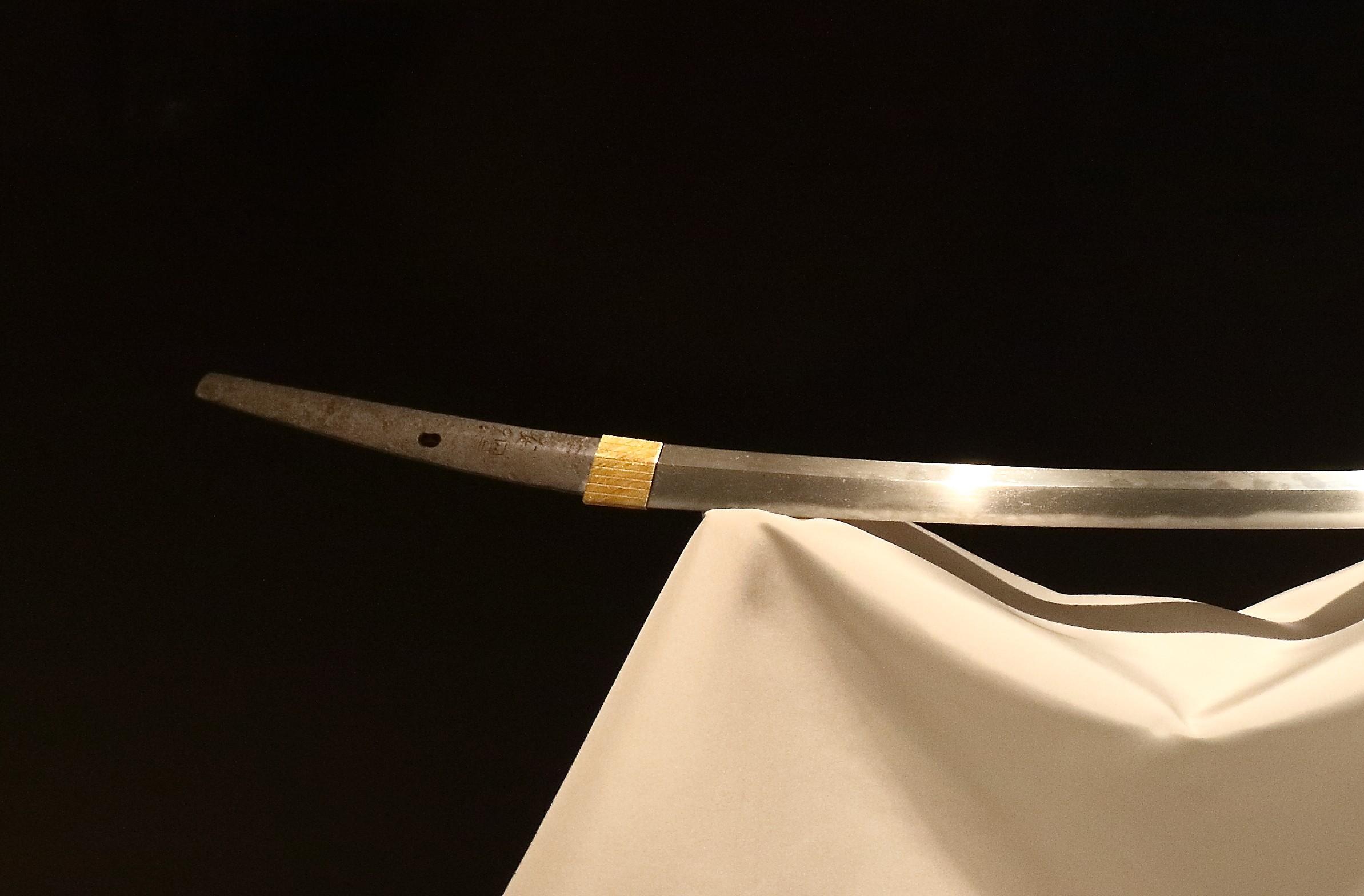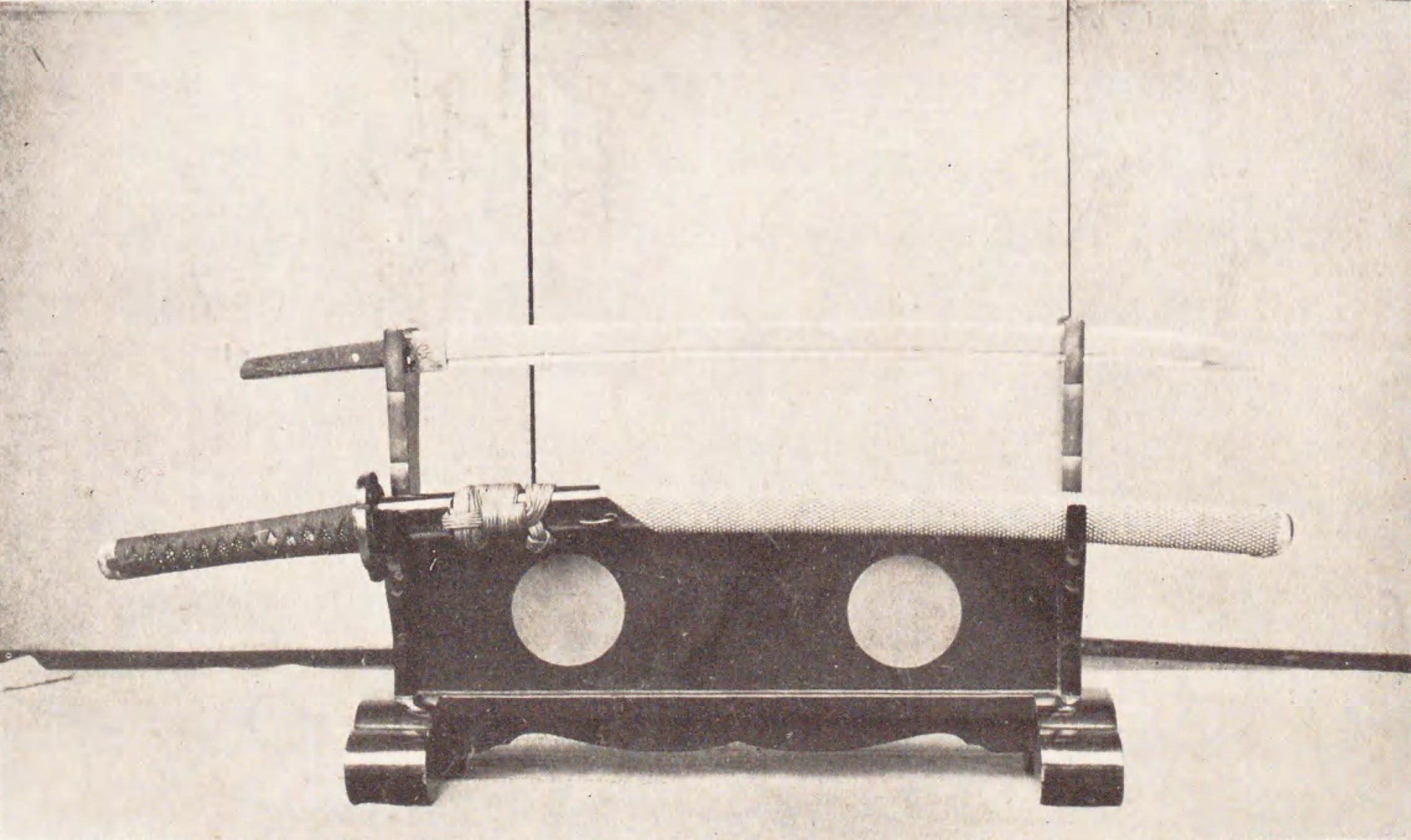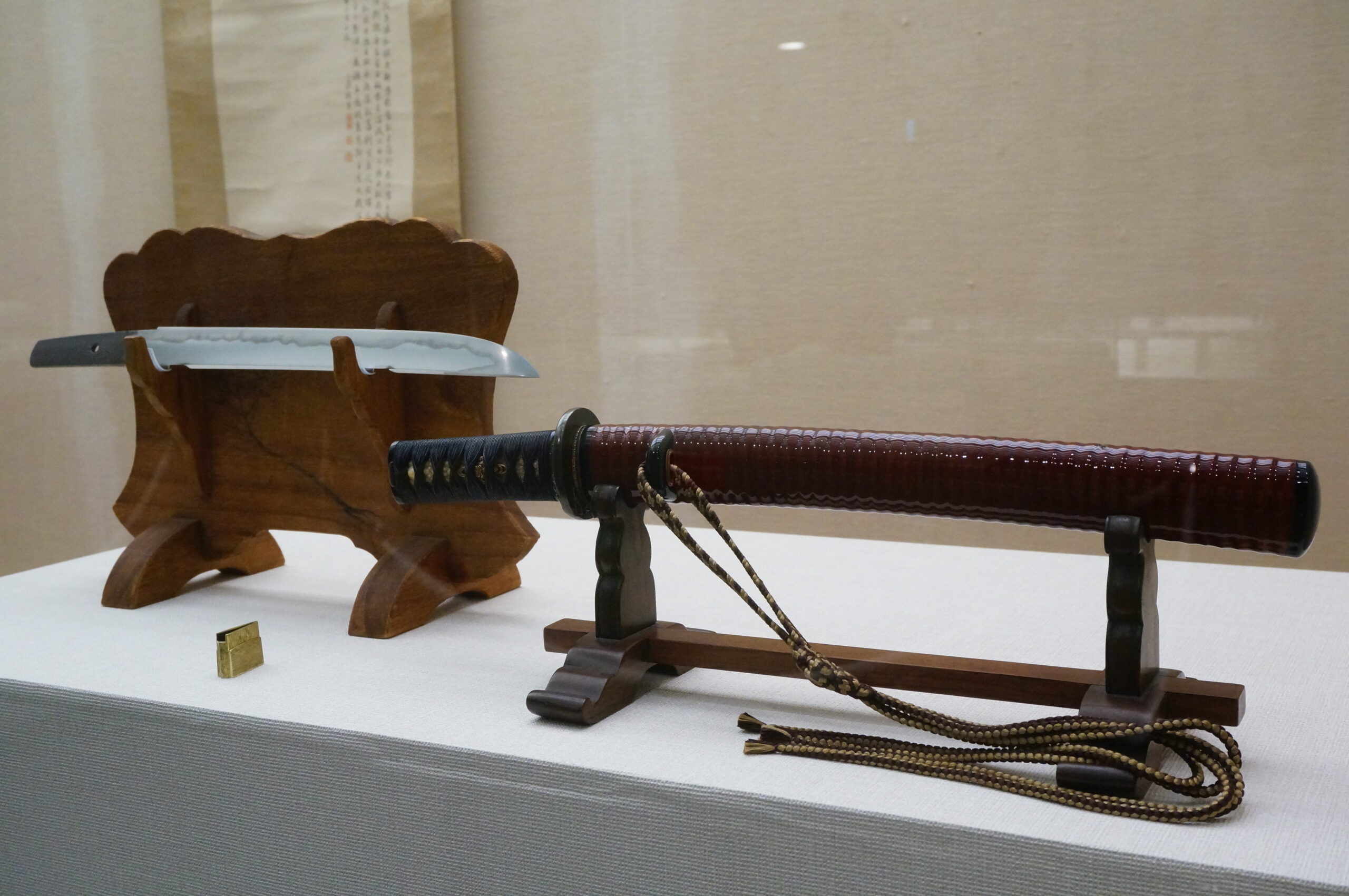Japan’s history is deeply rooted in the way of the samurai, and ancient swords tell the tales of an era filled with honor, discipline, and exquisite craftsmanship. Each of these ancient weapons, crafted by master swordsmiths, embodies a unique blend of art and function. These blades weren’t just tools of war but symbols of power, spirituality, and cultural heritage. Below are some of the oldest and most revered samurai swords ever found, each with its own rich legacy.
Kogarasu Maru

The Kogarasu Maru, also known as the “Little Crow,” is a rare example of a double-edged tachi sword, setting it apart from traditional single-edged Japanese blades. Dating back to the late 8th century, over 1,200 years old, this sword is attributed to Amakuni Yasutsuna, a pioneering swordsmith considered the founder of Japanese swordmaking. Crafted in the Yamato Province, it is made from tamahagane steel, meticulously folded and hammered for strength and flexibility. Its unique design combines straight, early sword forms with a curved katana-like edge, symbolizing a transition in Japanese sword development. Originally wielded by high-ranking samurai, it likely served ceremonial and combat purposes, symbolizing the elite status of its bearer.
Dōjigiri Yasutsuna

One of the fabled “Five Swords under Heaven,” the Dōjigiri Yasutsuna is estimated to be over 1,000 years old, dating back to the Heian Period (794–1185 AD). Created by Yasutsuna of Hoki Province, a legendary swordsmith, the blade was forged using refined tamahagane steel, known for its resilient edge and distinctive curvature, showcasing the early evolution of samurai sword design. Said to have been used by Minamoto no Yorimitsu to slay the demon Shuten Dōji, this sword has a storied history and a powerful reputation. It became a revered heirloom, symbolizing bravery and skill, passed down through generations of samurai warriors.
Mikazuki Munechika

The Mikazuki Munechika, meaning “Crescent Moon,” was crafted over 1,000 years ago, in the 10th century by the master swordsmith Sanjo Munechika, one of the earliest and most revered Japanese swordmakers. Created in Kyoto, it features a subtle crescent-shaped hamon, or temper line, along the edge, which inspired its name. Made from high-quality tamahagane steel, the blade exhibits a perfect balance between beauty and deadly functionality, symbolizing the refinement of Heian Period craftsmanship. This sword was often reserved for samurai of noble rank, likely serving in ceremonial roles as well as on the battlefield. Its elegance and precision have earned it a place as one of the “Tenka-Goken” (Five Swords under Heaven), denoting its exceptional status.
Kenukigata Tachi

The Kenukigata Tachi, believed to date back nearly 1,300 years to the Asuka Period (538–710 AD), is considered one of Japan’s oldest known swords. Its name, meaning “Tweezers-shaped sword,” refers to the distinct handle design, which resembles traditional Japanese tweezers, or “kenuki.” Forged from tamahagane steel, the Kenukigata Tachi is both functional and decorative, reflecting early Japanese metallurgical techniques. Discovered in the Ise region, this ancient weapon likely belonged to a high-status samurai or noble, serving as both a weapon and a symbol of power. Its age and craftsmanship provide valuable insight into early Japanese swordsmithing, marking a key point in the evolution of the tachi sword style.
Okanehira

The Okanehira, often referred to as “The King of Swords,” is over 800 years old and renowned as one of the finest examples of Japanese sword craftsmanship from the late Heian Period (12th century). This masterpiece was created by the esteemed swordsmith Kanehira, whose work is celebrated for its flawless form and deadly efficiency. Forged from tamahagane steel, the blade’s remarkable wave-like hamon (temper line) exemplifies the pinnacle of Heian-era swordmaking artistry. Known for its perfect balance, this sword was revered by influential samurai warriors who valued its beauty and lethality. Okanehira is a celebrated symbol of the samurai spirit, embodying both power and elegance in its construction.
Heshikiri Hasebe

Heshikiri Hasebe, created over 700 years ago, is a famous katana from the Kamakura Period (1185–1333 AD), known for its straight edge and its reputation as a “cutting blade.” Crafted by the renowned Hasebe Kunishige in Yamashiro Province, the sword was fashioned from high-grade tamahagane steel, giving it a sharp, resilient edge capable of cutting through armor. It was famously used by the powerful daimyo Oda Nobunaga, who relied on its deadly precision to execute swift justice. The sword’s name, meaning “forceful cutter,” reflects its intended purpose. Heshikiri Hasebe remains a powerful symbol of authority and unwavering action in Japanese history.
Nagashige Tachi

The Nagashige Tachi is a magnificent tachi-style sword from the early 13th century, crafted during the Kamakura Period, making it nearly 800 years old. Created by the master swordsmith Nagashige, this blade is known for its graceful curve, ideal for mounted combat, which was common in the period. Made from traditional tamahagane steel, it displays an intricate hamon pattern along the blade, showcasing Nagashige’s skill and attention to detail. Discovered in Echizen Province, this sword was likely wielded by prominent samurai, marking its importance as a weapon of high status. The Nagashige Tachi exemplifies the advanced craftsmanship and aesthetic principles valued by samurai warriors, making it a prized artifact in Japan’s rich history of martial arts.
Kanze Masamune

The Kanze Masamune, forged in the 13th century by the legendary swordsmith Masamune, is a masterpiece of Japanese craftsmanship, estimated to be around 800 years old. Masamune created this sword in Sagami Province, using tamahagane steel, prized for its durability and edge retention. Known for exceptional sharpness and resilience, the Kanze Masamune exemplifies Masamune’s innovative techniques, including his distinctive wavy temper line, or hamon. This blade was likely wielded by high-ranking samurai, serving as both a weapon and a symbol of power. Its refined structure and polished beauty have made it a revered cultural treasure in Japan.
Kamakura Masamune

The Kamakura Masamune, also attributed to the legendary swordsmith Masamune, was created during the Kamakura Period (1185–1333 AD) and is over 700 years old. Forged in the Kamakura region, this sword is crafted from folded tamahagane steel, giving it remarkable strength and a finely honed edge. It features a unique hamon, symbolizing Masamune’s iconic style. This sword was highly valued by samurai leaders and nobles, admired for its blend of beauty and deadly precision. The Kamakura Masamune remains a lasting testament to Masamune’s influence and the evolution of Japanese sword-making.
Horikawa Kunihiro

The Horikawa Kunihiro sword, crafted by the celebrated swordsmith Kunihiro of the Horikawa School, dates to the late 16th century and is roughly 450 years old. Created in Kyoto, this blade is made of tamahagane steel, known for its impressive strength and sharpness. Kunihiro’s work is recognized for its robust and balanced form, ideal for combat, reflecting his commitment to functionality and precision. The Horikawa Kunihiro sword was favored by samurai warriors, who trusted it for its reliability in battle. It remains a prized artifact, showcasing Kyoto’s rich sword-making tradition.
Sadamune

The Sadamune sword, crafted by Masamune’s esteemed disciple Sadamune, dates back to the 14th century, making it approximately 700 years old. Forged in Sagami Province, this blade is made from tamahagane steel and exhibits an intricate hamon, displaying Sadamune’s expert technique and attention to detail. Known for its flexibility and sharpness, it was a prized possession among elite samurai, valued for both ceremonial and combat purposes. Sadamune’s craftsmanship has earned him a reputation that nearly rivals his master’s, and this sword is a lasting symbol of his legacy in Japanese swordsmithing.
Kurikara

The Kurikara, crafted by the swordsmith Kuniyuki of the Yamato School, is an ancient blade dating to the early 13th century, making it over 800 years old. This sword was made in the Nara region and is named after the dragon deity “Kurikara,” highlighting its spiritual significance. Made from tamahagane steel, the Kurikara features a strong, durable structure, suitable for ceremonial and combative roles. Often associated with high-ranking samurai, it was revered as a symbol of protection and strength. The Kurikara represents a unique blend of spirituality and martial tradition in Japan’s cultural history.
Kiyomaro

The Kiyomaro sword, dating back to the early 19th century, was crafted by Kiyomaro, a famous apprentice of Suishinshi Masahide, and is approximately 200 years old. Created in Edo (modern Tokyo), this blade is forged from refined tamahagane steel, known for its exceptional strength and cutting ability. Known as the “Revival Swordsmith,” Kiyomaro incorporated traditional techniques into his work, producing blades renowned for their robustness and elegance. Samurai prized Kiyomaro’s swords for their sharpness and reliability in combat. The Kiyomaro sword remains a celebrated example of Edo Period craftsmanship.
Tomonari

The Tomonari sword, crafted by the swordsmith Tomonari of the Bizen School around the 10th century, is one of the oldest known samurai swords, with an estimated age of over 1,000 years. This blade, originating from Okayama, is made from tamahagane steel and showcases a gentle curve and refined hamon, hallmarks of early Japanese sword-making. The Tomonari was highly valued by samurai of high status, both for its aesthetic qualities and its effectiveness in battle. Its historical significance lies in its role as a foundational piece for later Japanese sword styles, marking a major milestone in sword-making.
Ishida Masamune

The Ishida Masamune, attributed to the famous swordsmith Masamune, dates back to the 15th century and is around 600 years old. Forged in Sagami Province, this sword is crafted from tamahagane steel and reflects Masamune’s advanced techniques in creating a balanced and sharp blade. Known for its distinct hamon and long-lasting edge, the Ishida Masamune was once wielded by Ishida Mitsunari, a notable samurai general during the Sengoku Period. This blade embodies Masamune’s craftsmanship and the courage of its famed owner, securing its place as a celebrated artifact in Japanese history.
This article originally appeared on Rarest.org.
More from Rarest.org
12 Old Gadgets That Are Surprisingly Valuable Today

In today’s tech-obsessed world, it might surprise you to learn that some old gadgets from the past are now highly valued collector’s items. Read More.
10 Bizarre Weather Events That Left Their Mark on History

Throughout history, unusual and extreme weather events have left a lasting impact on communities worldwide. Read More.
10 Oldest Empires in the World

Throughout history, some of the earliest empires shaped civilizations in ways that still resonate today. Read More.
